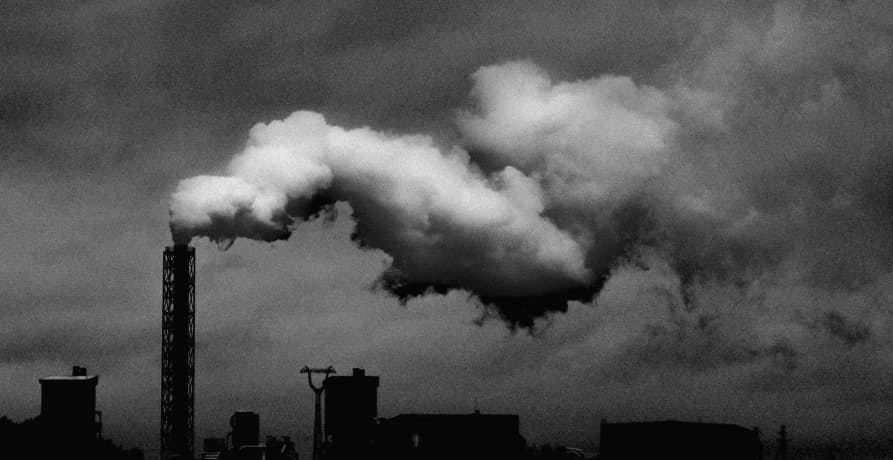
Sustainable Development Goals (SDGs): All You Need to Know
The United Nations has defined 17 goals, aimed at creating a better world. What are these so-called "Sustainable Development Goals" ? Explanations.
ESG / CSR
Industries



The Energy Charter Treaty (ECT), originally established in the 1990s to promote energy security and cooperation, is now under scrutiny for hindering climate action. Designed to protect foreign investments and facilitate energy trade, the ECT’s focus on fossil fuels and its Investor-State Dispute Settlement (ISDS) mechanism have become contentious. Critics argue that the ISDS allows companies to sue governments over climate policies, making states reluctant to implement the necessary changes and prolonging our reliance on fossil fuels.
👉 This article delves into the ECT's origin, role, and the debate over its effects on the global energy transition.
💡 ECT stands for the Energy Charter Treaty, a multilateral framework for international cooperation in the energy industry.
The ECT can trace its origins back to a political initiative launched in the 1990s. At the end of the Cold War, countries saw the opportunity to overcome divisions through economic cooperation. The energy sector was of particular focus given the growing demand for power and the large resources found in Russia and other post-Soviet Union countries. These conditions gave rise to the European Energy Charter declaration which was signed in December 1991.
The European Energy Charter declaration contained principles of international energy cooperation along with the obligation to develop a legally binding treaty - this treaty would be known as the Energy Charter Treaty (ECT).
The ECT was signed in Lisbon in December 1994 and came into force in April 1998. There are 53 signatories and contracting parties, including the European Union and the United Kingdom.
The ECT establishes a legal framework that facilitates cross-border cooperation in the energy industry - with a particular focus on the fossil fuel industry. Its provisions cover topics such as investment protection, liberalization of trade, freedom of transit, dispute settlement, and environmental protection. Its primary aim is to bolster energy security by fostering more open and competitive energy markets.
The ECT focuses on four key areas, namely:
In recent years the ECT has faced a barrage of criticism for its secretive system of arbitration which allows investors and companies to sue states for compensation over policy changes that adversely impact business operations and revenue. Critics claim that the system undermines climate targets and is prolonging dependency on harmful fossil fuels.
The IPCC for example, in their report of the third working group (Climate Change 2022: Mitigation of Climate Change) stated that “A large number of bilateral and multilateral agreements, including the 1994 Energy Charter Treaty, include provisions for using a system of investor-state dispute settlement (ISDS) designed to protect the interests of investors in energy projects from national policies”. They warned that the mechanism was “being used by fossil-fuel companies to block national legislation aimed at phasing out the use of their assets” and emphasized that energy sector transitions are shielded from “much needed climate action” as a result.
This criticism has caused many countries - including France, Spain, and Germany - to pull out of the ECT. The EU has also proposed an exit for the entire bloc over climate concerns. In fact, the UK and Japan are now the only two major economies that have not signaled their intention to leave.
Controversially, the UK’s continued commitment to the ECT flies in the face of recommendations from the UK’s own climate advisory body - the Climate Change Committee (CCC). The CCC warned that “continued membership of the Energy Charter Treaty (ECT) represents risks to both a timely climate transition and to the taxpayer” and recommended that the UK exit the treaty.
In early 2023 over 100 academics wrote to the UK Government to voice their concerns over the ECT. The letter stated that “continued membership of the ECT will harm prospects of limiting global warming to 1.5 degrees because it will prolong the UK’s dependence on fossil fuels and impede the transition to renewable energy”.
The group of esteemed academics highlighted that investors had already brought cases against countries for the phasing out of power stations, for banning oil and gas exploration in coastal areas, and for introducing regulations requiring environmental impact assessments. They claim that by allowing cases to be brought against countries for the hypothetical loss of future profits and facilitating the payout of significant sums of money, the ECT was pushing up the costs of effective climate action. Not only this, they also claim the ISDS mechanism is making countries more reluctant to introduce new climate legislation for fear of a case being brought against them.
👉 To discover why fossil fuels are so bad for the environment why not check out our article on the topic.
Investor-state dispute settlement (ISDS) mechanisms are not specific to the ECT, in fact, they can be found in over 3,000 different investment treaties around the world. However, they’re increasingly coming under fire for their protection of investors at the expense of progression that often benefits the wider public.
The ISDS mechanism is designed to protect investors from the arbitrary action of governments and to ensure that foreign investors are not discriminated against in any way. Arbitration is considered to be more neutral than the courts of a country - this is particularly true in states where there is no real separation of power between those who govern and the court system.
In recent years, however, there have been calls to modernize these traditional mechanisms over fears that the interests of investors takes unfair priority over a state's right to govern its own market.
The way the ISDS mechanism of the ECT works is that it allows investors to enter into a secretive process of arbitration whereby claims can be raised against the state for any policies or actions that threaten future profitability. The system is different from national legal systems: cases are overseen by three independent arbitrators appointed by the investor, by the state, and by the two selected arbitrators. The case is then argued by lawyers behind closed doors. There is no obligation to reveal the outcome.
With such secrecy involved, it cannot be guaranteed that arbitrators and lawyers involved in cases have not also worked for the other side in different disputes, or that they don’t have links to law firms involved in cases they are adjudicating. This has led to claims that the process raises risks of potential conflicts of interest and prejudice.
It’s not hard to see how this mechanism can be problematic in the context of climate action. In fact, claims brought against member states have surged in recent years as countries took action to reduce their greenhouse gas emissions in line with the requirements of the Paris Agreement.
National policies aimed at furthering climate action will inevitably impact foreign investments in the energy sector, making disputes between investors and states incredibly likely. The effect is that fossil fuel investors are able to revert to the ECT’s dispute settlement mechanism to challenge such policies and actions. A coal plant for example that is impacted by national policies aiming to phase out coal use could raise an action against the state and claim billions in damages due to the high levels of protection afforded to investors under the ECT.
❗Fossil fuel companies have been awarded over £82.5 billion ($100bn) in damages through ECT tribunals. Most recently, the UK oil firm Rockhopper was awarded $190 million in a case against Italy after the country reinstated a ban on near-shore exploration in 2015.
👉 The UK’s continued membership of the ECT is not the only environmental controversy. Head over to our blog to read why the UK Government has come under fire in recent months for green policy U-turns.
Unfortunately, current proposals to modernise the ECT would not include any limitation to the ISDS mechanism for existing foreign investment in fossil fuels until 2033 for oil and 2043 for natural gas. This essentially means that oil and gas investors will be afforded continued protection against state action at exactly the time when we should be pushing to phase out our reliance on fossil fuels.
The UK has so far refused to bend to pressure to exit the treaty and has instead stated that it is a “strong advocate for updating the treaty to ensure it is aligned with modern energy priorities, international treaty practice, and international commitments on climate change.”
However, given the number of countries who are set to quit the treaty, some commentators doubt whether renegotiation of the treaty is even possible.
It should also be noted that the ECT in its current form contains what's referred to as a "sunset clause". This essentially means that even when a state exits the ECT, it activates a 20-year clause that allows actions to be brought under the ISDS mechanism for existing investments. Withdrawing states are permitted to "neutralise" the clause among themselves, however, the clause will still protect investors from states remaining in the ECT.
At Greenly we can help you to assess your company’s carbon footprint, and then give you the tools you need to cut down on emissions. Why not request a free demo with one of our experts - no obligation or commitment required.
If reading this article has inspired you to consider your company’s own carbon footprint, Greenly can help. Learn more about Greenly’s carbon management platform here.